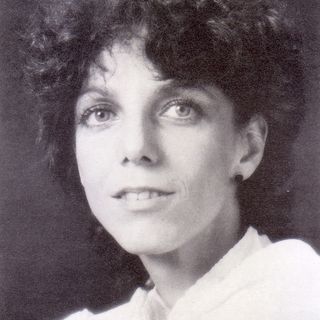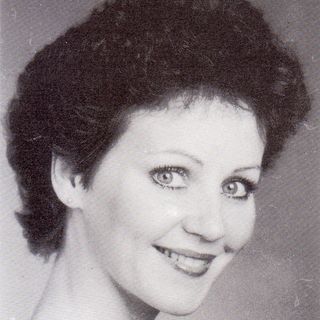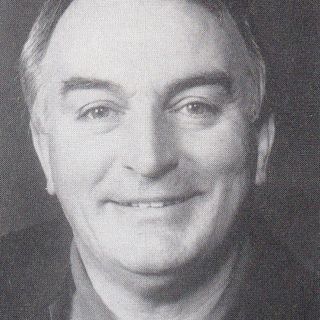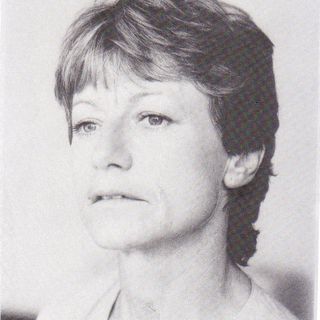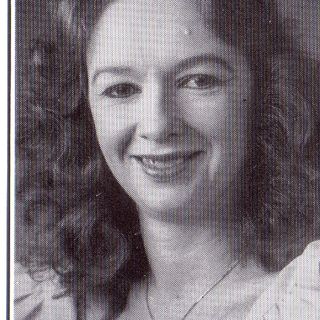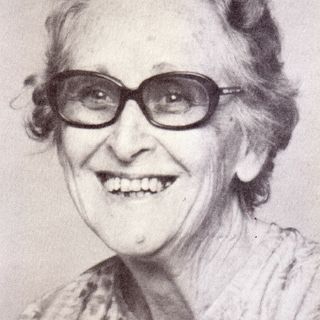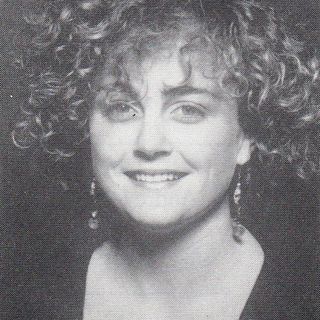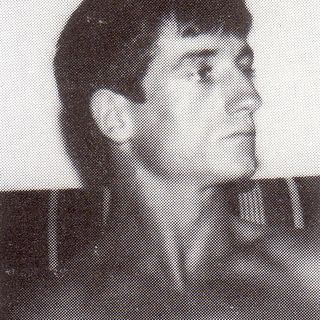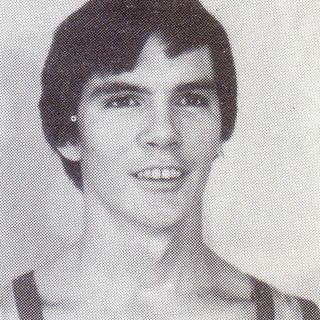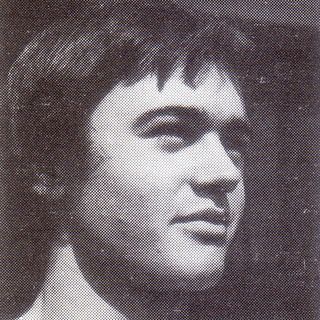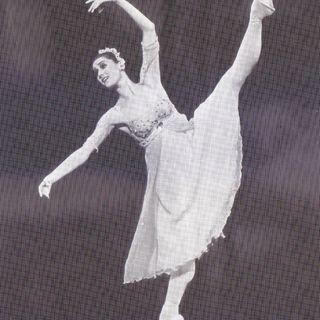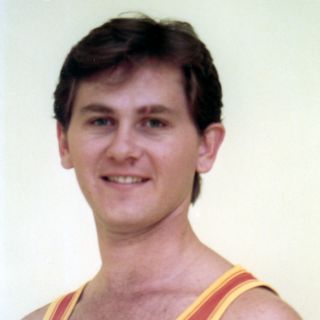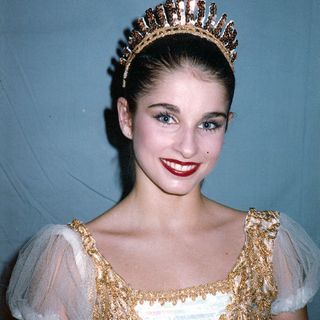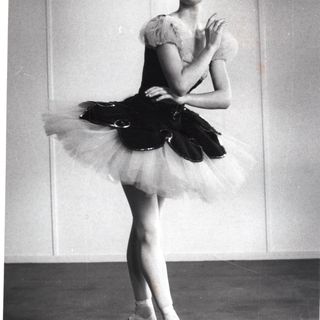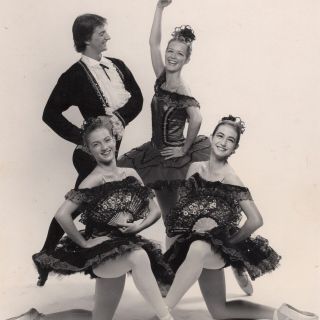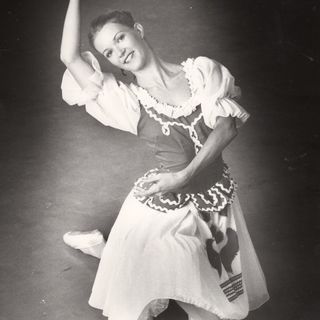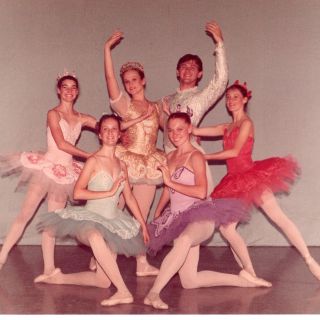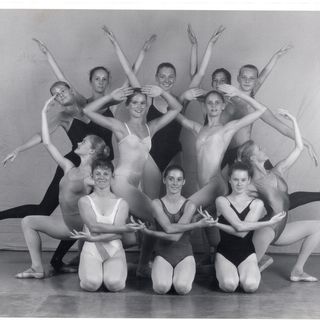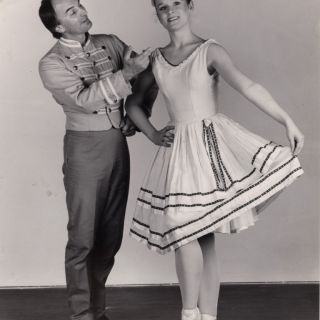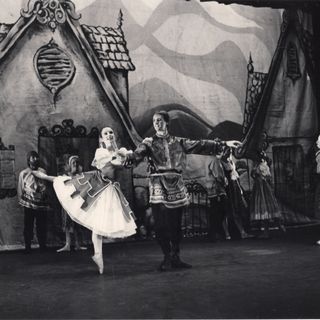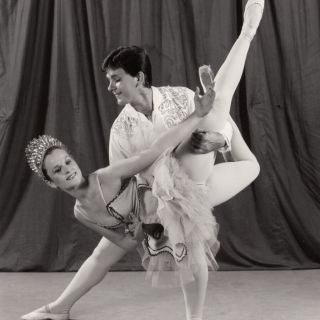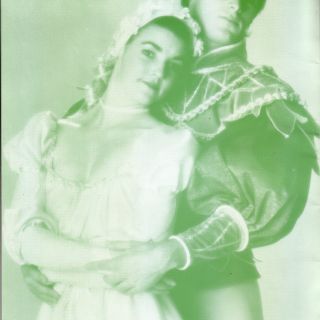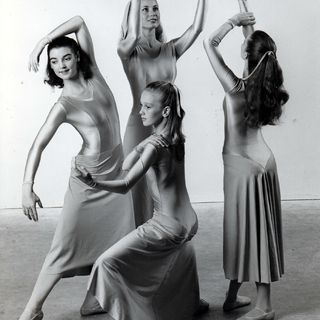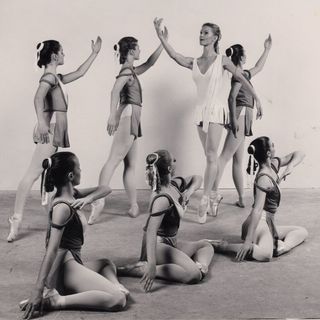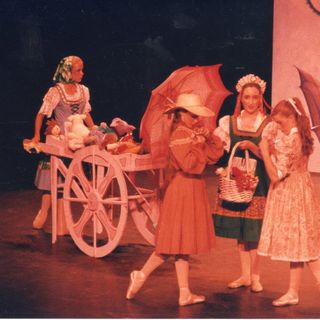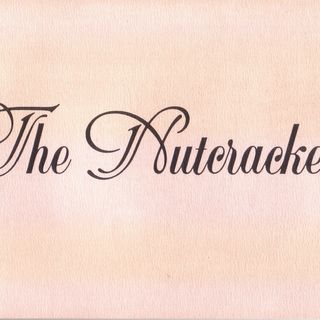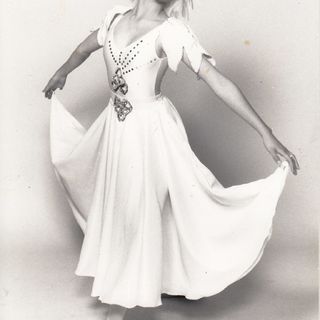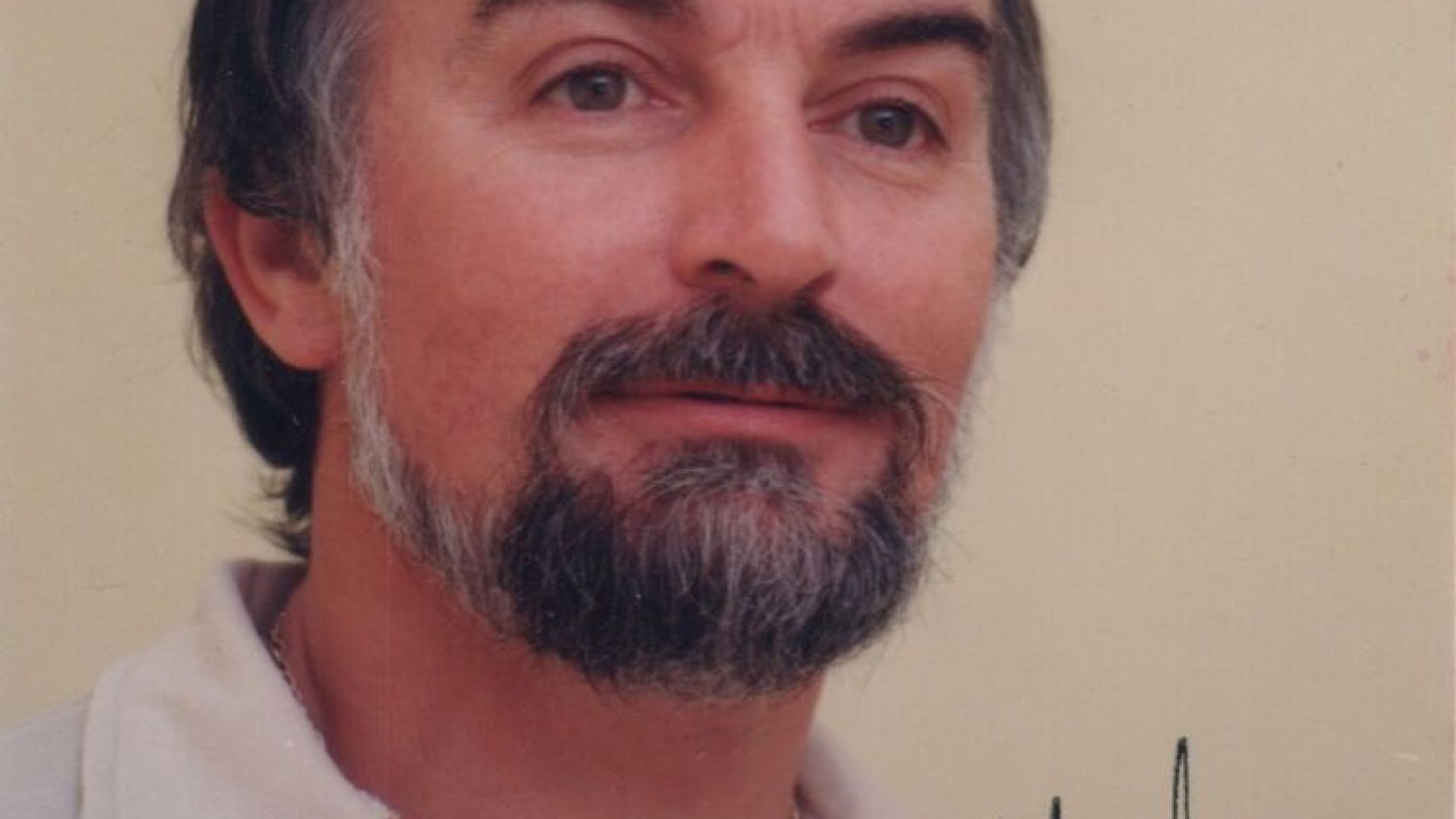
The 1980s
The 1980s began well with a reprisal of Sylvia originally choreographed for BTQ by Marilyn Jones in 1974. It was reproduced by Wendy Lowe and Susan McIntosh with Susan and guest artist Martyn Fleming in the lead roles. The program was completed with Phyllis Danaher’s production of Swan Lake Act II with Rudy Guerin dancing the Prince and Glenda Kelly as the Swan Queen. Opening at Her Majesty’s, this program toured to Nambour, Gympie and Murwillumbah.
The year ended with Cinderella at Twelfth Night Theatre with Glenda Kelly as Cinderella and Darryl Sim as the Prince. In the same year BTQ lost its distinguished President with the death of Sir Mostyn Hanger KBE. He still holds the record for the longest serving BTQ President having served from 1970 to the year of his death.
An Australian premiere heralded 1981 with Leslie White’s new ballet Pulcinella Plays Cupid performed alongside Phyllis Danaher’s Symphony in C and the ever-popular Graduation Ball. The year ended on a happy note with a season of Nutcracker Suite and Pas de Six at City Hall. But all was not well, and trouble was looming on the horizon.
In 1982 the downturn in the world economy meant a Queensland Government cut in BTQ funding from $22,000 to $12,500. As a result only one production was possible for the year. It was an ambitious program of three ballets performed by a cast of 46 dancers in the Twelfth Night Theatre. It comprised a new version of Paquita choreographed by Judith Lowe (the ballet was first seen on the BTQ stage in 1970 choreographed by William Gill); a new work choreographed by Sandra Breen called Refracted Light; and an old favourite from the 1950s and 1960s,The Legend of Roksanda choreographed by Phyllis Danaher. A handsome new program completed the professional look of the season, compiled and designed by long term BTQ associate Ken McCaffrey.
Phyllis Danaher completed her long term of 22 years as Artistic Director in 1985 but continued in the new role of Artistic Advisor. Marjorie Hollinshed, a long time friend of Miss Danaher wrote about this transition in her book In Search of Ballet in Australia:
During 1984-85 Phyl decided that it was time to enjoy the fruits of her labours and for her to pass on the reins of Ballet Theatre to a younger person. However, Ballet Theatre requested that she accept the position of artistic advisor and this she was delighted to do. Wendy Lowe, a long time pupil of Phyl and who was Ballet Mistress and repetiteur for a number of years and in whom Phyl has great confidence, was asked to accept the added responsibility of looking after the company to which Phyl had devoted so many years. Wendy continues to seek Phyl’s approval and advice with love and respect for she fully realises the great wealth of knowledge of her teacher and long time friend.
In 1985 the company experienced a major blow when the Queensland State Government discontinued funding to all Queensland amateur arts organisations. BTQ now found itself in a precarious financial position but struggled on, surviving through box-office profit, paid performance opportunities and sponsorships, especially from Brisbane’s FM Radio station B105.
Despite the funding cut, President Cath Mackenzie-Forbes reported a highly successful year of achievements by the executive committee and the entire company. A highlight of the year was the outstanding production of two ballets: Beauty and the Beast, an entirely new ballet choreographed and directed by Garth Welch with stunning costumes designed by Max Hurley; and Paquita, beautifully reprised by choreographer Judith Lowe.
Jacqui Carroll, one of Australia’s most respected choreographers, was responsible for a delightful production of Babes in Toyland in 1986. The 70-strong cast’s costumes were designed by Max Hurley and made by the company’s gifted wardrobe mistress Theda Lowe, who had been with BTQ for 24 years. The production was widely critically acclaimed. David Tickell wrote: “To describe Babes in Toyland ... as brilliant is a classic understatement. The show is incandescent.”
Turning 50 is always cause for great celebration. The centrepiece of BTQ’s Golden Jubilee Year of 1987, framed very much as a tribute year to Miss Danaher’s outstanding contribution, was the Ballet Gala at the Suncorp Theatre. It featured an impressive array of stars from the Australian Ballet including Marilyn Jones OBE and Stanton Welch, The Borovansky Ballet, The Royal New Zealand Ballet, and various state companies. Other events included a new staging of The Nutcracker produced by Wendy Lowe and Judy Lowe, a Golden Jubilee Dinner, and a Combined Teachers Recital organised by Sue McNutt and Marianne Grosskreutz. [Read more about the Golden Jubilee in a separate ‘story’ on this website.]
After two years guiding the company (albeit under Miss Danaher’s watchful eye!), Wendy Lowe was succeeded by a new Artistic Director Leslie White. Co-founder of the Australian Dance Theatre, then dancer, choreographer and later assistant director of the Queensland Ballet, he began his new role with BTQ in 1988 and stayed with the company until 1993.
1988 was another tough year financially for Ballet Theatre, the Chairman Marie-Ann Grosskreutz, in her annual report, calling it “very rewarding because we have survived under extremely difficult financial circumstances.” Grant applications to support Leslie White’s salary were knocked back creating the embarrassing situation of asking the new Artistic Director if he would continue without salary until the financial situation improved. He generously said “yes”. Drawing on Miss Danaher for inspiration, Mrs Grosskreutz asked members to never let it be forgotten what Ballet Theatre stood for. Other impacting factors that she drew attention to were the full time schools now available to senior dancers resulting in a younger cohort of BTQ dancers, and the increasing demands Year 12 now made on students.
President Kenneth McCaffrey was deeply disappointed with the State Government’s refusal to even offer financial support for professional staff and guest dancers. Threatening to go to the media, he urged members to take action: “... now is the time for action, not tomorrow or next year.” Alas, the government was immutable and no further funding was forthcoming.
The final year of the decade brought some renewed sense of optimism. A big step forward financially and for developing a wider audience base was the establishment of the company in the area of shopping centre performances during school vacations. Most exciting though was the success of artistic director Leslie White’s major production for the year The Story of Elizabeth and Swan Lake. Choreographed by White it blended classical and modern dance with traditional and contemporary music and the spoken word. Dance critic Peta Koch judged it “... easily Ballet Theatre of Queensland’s most adventurous production” and Leslie White declared that this production had “established Ballet Theatre well and truly in the forefront of innovative and creative artistic achievement.”
Sources: BTQ Annual Reports 1981-1989; In Search of Ballet in Australia by Marjorie Hollinshed; David Tickell review in The Downs Star, 15 October 1986; Peta Koch review in The Courier-Mail, 2 October 1989.
Researcher and writer: Dr Christine Comans
